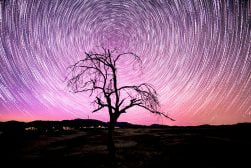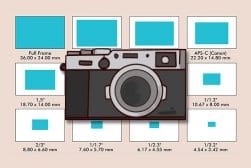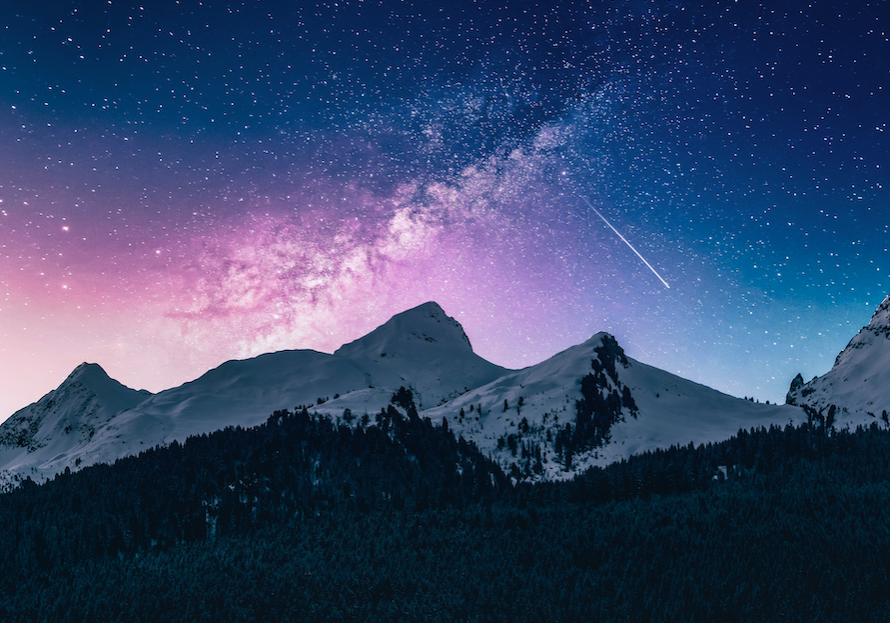
How to use the 500 Rule in Night Sky Photography
Master the art of capturing sharp stars with our guide on using the 500 Rule in night sky photography, ensuring clarity in every celestial shot.
Learn | By Judyth Satyn
This guide to how to use the 500 rule in photography properly will help you capture epic shots of starry skies.
The 500 rule is an easy-to-remember formula used when taking photos of stars so that there are no star trails.
Learn how to take awe-inspiring night sky photos of trail-free stars.
Discover how astrophotographers around the world use the 500 rule and how you can use it for your astrophotography too.
What is the 500 Rule in Astrophotography?
The 500 rule is a way to ensure that stars in a photo don’t appear blurred. To apply it to your photography, start with the number 500, then divide it by the focal length at which you intend to shoot – this will give you the shutter speed in seconds.
Table of Contents
Understanding the 500 Rule in Night Photography
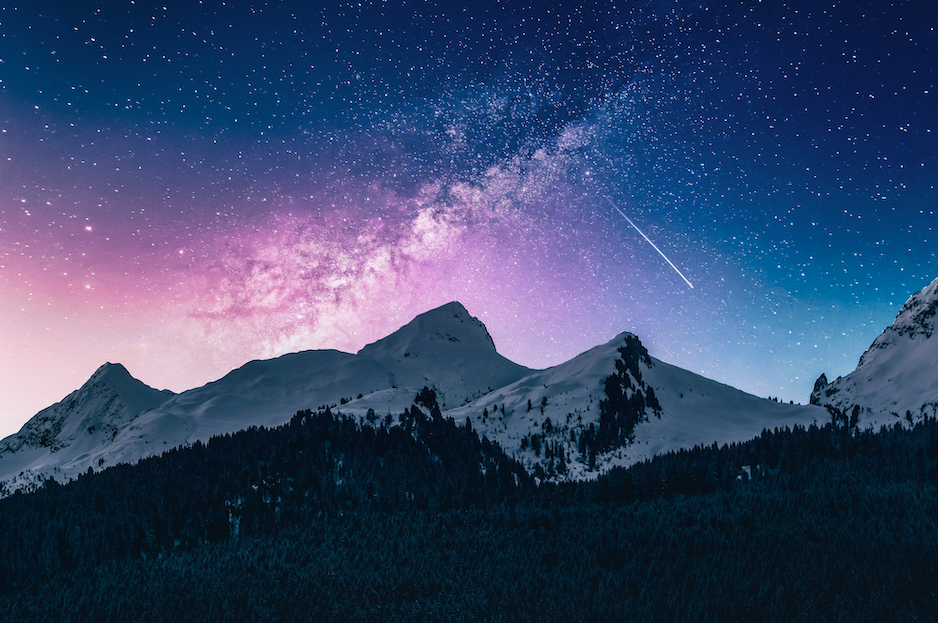
Image: Benjamin Voros
- The Essence of the 500 Rule
The primary objective of the 500 rule is to prevent star trails when capturing photos at night.
Achieving clear shots of bright stars against the night sky is both rewarding and challenging.
It’s disheartening when multiple attempts yield only blurred, star-streaked images of the Milky Way, devoid of clarity.
- Identifying the Problem
It’s essential to understand that light pollution or camera shake isn’t the primary culprits behind these blurred images. Instead, the issue often lies in the incorrect camera settings.
The sky’s apparent movement from east to west, due to Earth’s rotation, causes this blurring.
This rotation completes 360 degrees every 24 hours, translating to 0.0042 degrees every second or 15 degrees per hour.
Consequently, this natural sky movement causes light to trail behind stars in photographs.
Extended exposures, even with a tripod, can result in elongated trails following the stars.
- Implementing the 500 Rule
Enter the 500 rule: a straightforward mathematical equation designed to address this challenge.
It factors in the sky’s 15-degree-an-hour movement, the camera lens’s focal length, and the camera’s sensor.
The rule helps determine the optimal shutter speed to capture stars crisply before any blurring occurs.
- Practical Application
Astrophotographers frequently rely on the 500 rule to ascertain the right exposure. F
ortunately, you don’t need advanced math skills—just the ability to apply the formula.
However, it’s essential to note that the 500 rule equation varies based on the camera model, primarily due to sensor size differences. Additionally, the camera lens’s focal length must be considered.
- Origins and Adaptations
Originally crafted for 35mm film grain, the 500 rule is adaptable for digital cameras. Some tweaks to the formula can accommodate the nuances of digital camera components.
It’s crucial to remember that the 500 rule serves as a guideline, not an absolute standard. Therefore, it’s wise to allow room for adjustments based on specific shooting conditions.
Why do Photographers use the 500 Rule?
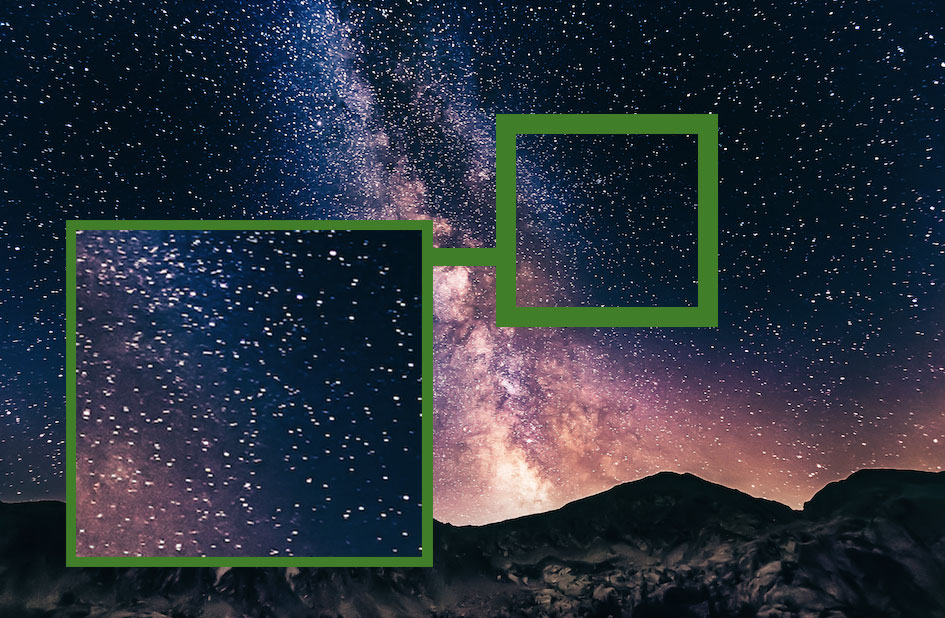
- The Rise of Astrophotography
Astrophotography is rapidly gaining popularity, especially as the equipment required becomes more affordable.
The allure of capturing the mesmerizing night sky is undeniable, and once you start, it’s easy to become enamored with the results.
- Purpose of the 500 Rule
So, why do photographers turn to the 500 rule? Primarily, it’s a tool developed to minimize star trailing in photographs, ensuring that the celestial bodies appear sharp and clear.
Achieving professional-quality photos of the night sky demands precision, patience, and, of course, the application of the 500 rule.
- Guideline, Not a Rule
While termed a “rule,” it’s more apt to consider the 500 rule as a guideline. Adhering to it can save photographers from the disappointment of blurry, star-trailed images that either end up deleted or, in the case of film, discarded.
- The Science Behind the Rule
The 500 rule provides an estimate of the maximum exposure time before star trails become noticeable. If you exceed the recommended shutter speed, your images of the sky may lack clarity.
This is because, during long exposures, the sky’s rapid movement, especially when photographing vast expanses like the Milky Way, becomes evident.
The star trail’s length in a photo is influenced by several factors, including the field of view, image resolution, exposure time, sensor size, and the star’s angular speed and declination.
- Practical Application
Embrace the 500 rule during your nighttime photography sessions. The resulting images, with their crisp and frozen stars, will undoubtedly leave you in awe.
However, if your artistic vision leans towards capturing star trails, feel free to sidestep the 500 rule. After all, star trails have their unique charm.
Alternatively, you can use the 500 rule to determine the exact moment when your photos will showcase these beautiful trails.
When Should I Use the 500 Rule?
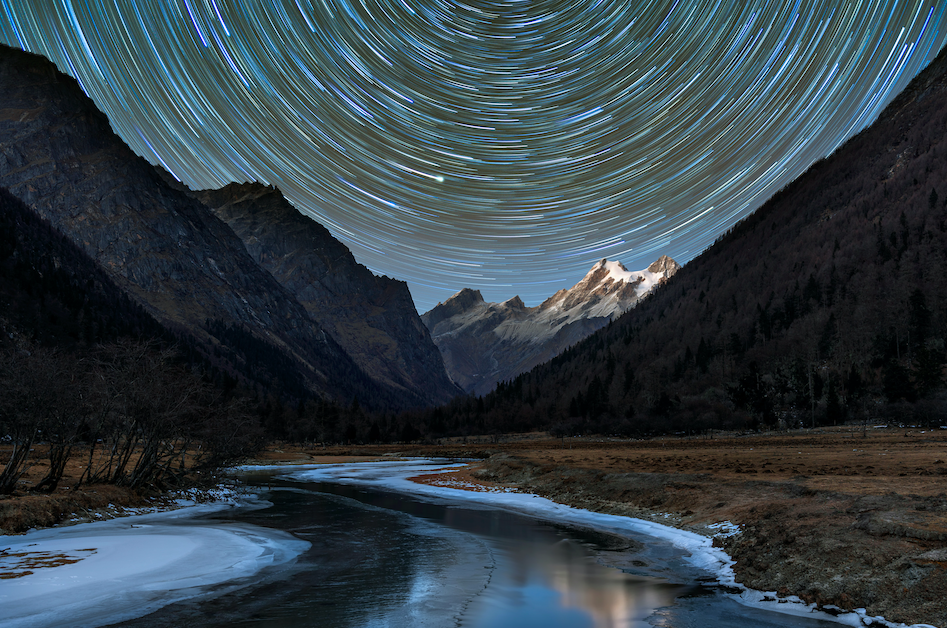
Image: Hu Chen
Utilizing the 500 rule is essential when photographing the night sky, as it helps account for the sky’s movement.
Visible star trails can emerge in nighttime photos based on various factors.
Engaging in night sky photography can be a profoundly rewarding experience, producing breathtaking images.
Venturing to remote locations, away from the city’s light pollution, enhances the clarity of the celestial bodies.
However, neglecting the sky’s motion can lead to numerous discarded shots. Capturing the starry expanse without the interference of star trails is indeed a formidable task.
Without adhering to the 500 rule, achieving sharp star images relies heavily on sheer luck.
For those aiming to depict stars as distinct points rather than luminous trails, the 500 rule is invaluable.
It’s particularly effective with wide-angle lenses and those with a focal length up to 200mm, ensuring the sky’s movement doesn’t compromise the clarity of your shots.
How Camera Sensor Size Affects the 500 Rule
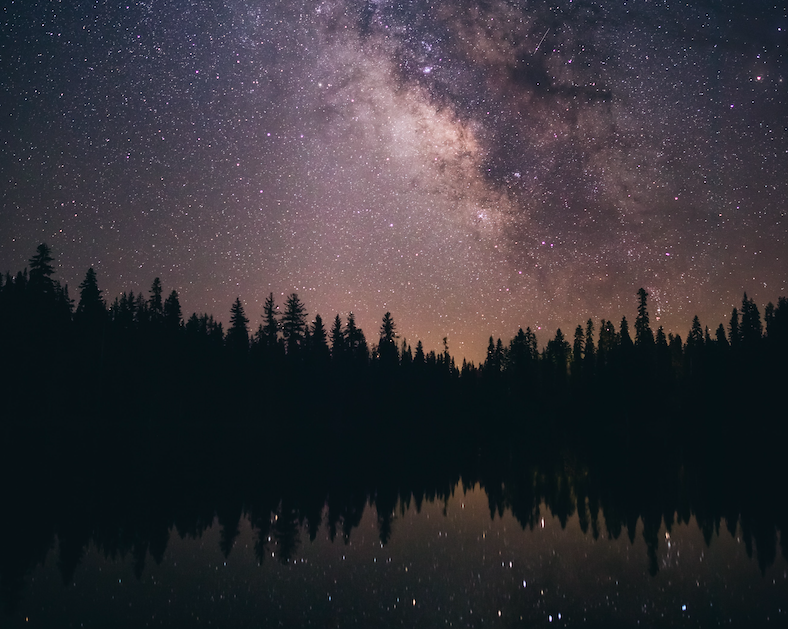
Image: Thomas Ciszewski
The size of a full-frame camera’s sensor is 36 mm by 24 mm. This is based on the original 35 mm film roll.
Crop sensor cameras crop the image for a tighter field of view. They capture less light than when using a traditional full-frame camera.
Low light absorption means exposure times calculation will need to be adapted.
The crop factor in the 500 equation takes into account the size of the camera’s sensor. The result is a faster shutter speed.
Some people prefer crop cameras as they are compact and light. They are also more affordable than their full-frame counterparts.
Another advantage of cameras with cropped sensors is an increased depth of field.
Calculating the 500 Rule on Crop Sensor Cameras
Each camera manufacturer has a different-sized camera sensor.
Depending on the different cameras you use you will need to use a different crop factor.
- Canon
Cannon’s APS-C crop sensor cameras are compatible with all Canon lenses. EF-S and EF lenses.
The size of the sensor is 22.2 mm x 14.8 mm. This is 60% the size of a full-frame sensor camera.
The Canon APS – C crop factor is 1.6 x.
Here is an example of an equation using the rule for a Canon APS-C camera with a 50mm lens.
500/ (crop factor x focal length) = shutter speed.
500 / ( 1.6 crop factor x 50 lens length) = 6.2 seconds shutter speed.
- Nikon
Nixon DX cameras crop sensor cameras are compatible with all Nixon lenses.
The size of the sensor is 24 mm x 16 mm and the Nixon DX crop factor is 1.5 x.
Here is an example of an equation using the rule for a Nixon DX camera with a 100mm lens.
500 / ( 1.5 crop factor x 100 lens length) = 3.3 seconds shutter speed.
- Fujifilm
Fujifilm APS-C crop sensor cameras are compatible with all Fujifilm lenses.
The size of the sensor is 24 mm x 16 mm and the Fujifilm crop fact is 1.5 x.
Here is an example of an equation for a Fujifilm APS-C camera with a 65 mm lens.
500 / ( 1.5 crop factor x 65 lens length) = 5. 1 seconds shutter speed.
- Sony
Sony APS-C crop sensor cameras are compatible with all Sony lenses.
The size of the sensor is 24 mm x 16 mm and the Fujifilm crop fact is 1.5 x.
Here is an example of an equation for a Sony APS-C camera with an 85 mm lens.
500 / ( 1.5 crop factor x 85 lens length) = 3.9 seconds shutter speed.
Calculating the 500 Rule on Full Frame Cameras

Image: Nick Owuor
A full-frame camera has a sensor the same size as a 35mm film.
A full-frame camera has no crop so you will not need to add the crop factor to the 500 rule when using it.
The full-frame 500 calculation is reduced to the bare minimum. Simply divide 500 by the focal length of the lens.
This will give you the shutter speed time in seconds to use before star trailing becomes evident.
For example, if you plan to shoot the Milky Way with a 35mm lens the maximum exposure will be (500/35 = 14.28) 14.28 seconds.
In the context of preventing star trails, full-frame cameras allow for a longer shutter speed than cameras with cropped sensors since they allow for a longer shutter speed before star trails become noticeable.
Therefore if your astrophotography plan is to take splendid photos of the moon framed by perfect points of stars you will have more success with a full-frame camera.
How to Use the 500 Rule to Calculate Shutter Speeds
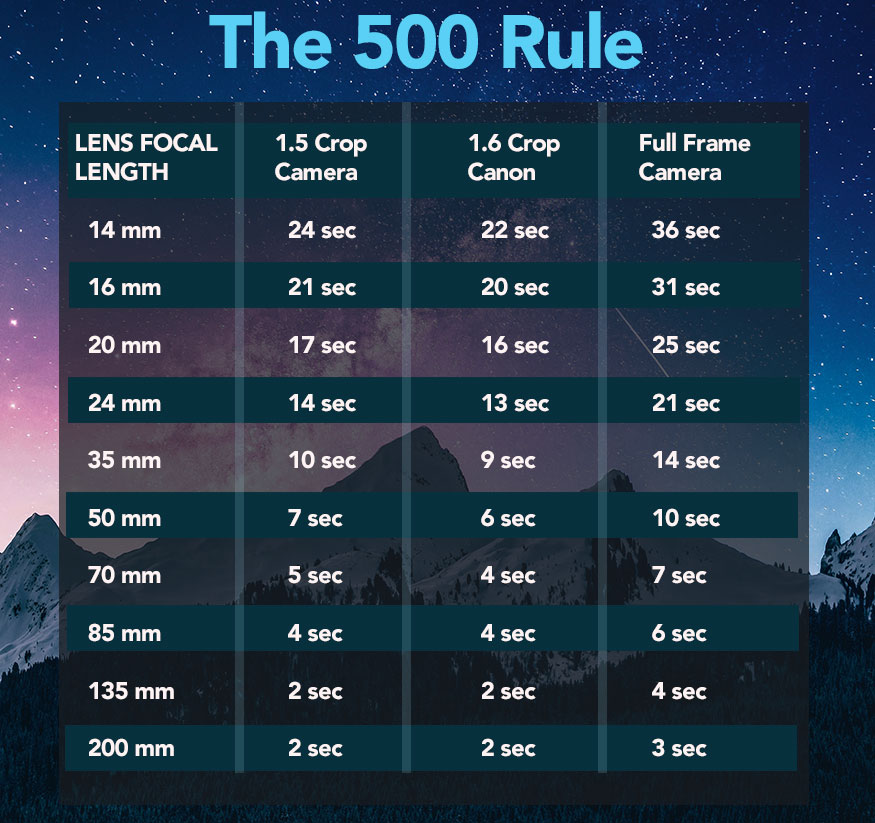
500 Rule Chart
When using a camera with a cropped sensor the equation is – 500/ (crop factor x focal length) = Shutter Speed.
Multiply the crop factor by the effective focal length of the lens. Then divide the result by 500.
The shorter the focal length the longer you will be able to set the shutter speed. Thus the clearer the star images will be.
Here is an example of an equation using the rule for a Canon APS-C crop sensor camera with a 50mm lens:
The crop factor is 1.6 and the length of the lens is 50mm. 500 / ( 1.6 crop factor x 50 lens length) = 6.25 seconds.
This means that with an exposure set under 6 seconds, there will be no star trailing. Using this combination of camera and lens.
If you want to maximize the amount of light the exposure collects you can alter the ISO and F-stop settings.
Don’t be put off if you are not a fan of maths. It’s easier when you try it, and the chart I made about should help you.
5 Tips for Making the 500 Rule Work Well
Astrophotography Apps
There are astrophotography apps that are worth checking out. Especially if you want to sink your teeth deep into nighttime photography.
PhotoPills has features designed for DSLR cameras. It will help you plan your star-streaked shot.
This camera app will help you calculate your camera settings to suit your project. Plus use the 500 rule to calculate the shot’s maximum exposure time.
Celestron’s Skyportal is free and designed for astronomers. It will tell you which stars you are photographing.
From constellations to star clusters. Plus inform you of their history.
Tripods
If you plan to take long exposure shots a tripod is a must. Anything shot over a 1/60th of a second will detect hand tremors.
There are different types of tripods. Some are compact and light. These travel tripods are ideal for carrying on long treks up mountain tops.
Other tripods are heavier. These heavy-duty tripods will have the stability needed to support a larger camera.
You could consider investing in an equatorial telescope mount. That is if you want to experiment further with astrophotography.
It is a computerized mount you can attach to a tripod that tracks the movement of the stars.
If you own a star tracker and tripod you won’t need the 500 rule.
Shutter Release
To help reduce camera shake, you can use a remote shutter release.
Even a tiny fraction of a shake can cause an image to blur. By using a shutter release you will cut down on this possibility.
There are different types of remote shutter releases. Pick one that suits you. You can attach a cable release or try a remote-controlled shutter release.
Image Stacking Software
Image stacking software stacks similar images to reduce the signal-to-noise ratio.
Astrophotographers use image stacking software to lower noise in the final image.
It won’t fix streaky trailing stars but it will help minimize minor haze around stars.
DeepSkyStacker, Siril, and PixInsight are three good options for stacking software.
Image stacking software works by aligning the image to find an average to improve image quality.
Camera Settings
The aim of the 500 Rule game is to collect maximum light each exposure before movement is detected.
If the shutter speed is open longer the stars will lose definition. Blurring will be evident in the photo.
The shorter the focal length of the lens the longer the exposure can be. This will give more clarity to your image.
You can compensate for shorter exposures by increasing your ISO.
The results will be in focus perfectly clear round stars.
And remember the 500 rule is only a guideline. Don’t be hemmed in by it.
What’s the NPF Rule (and How Does it Affect the 500 Rule?)
The NPF rule is a recent addition to the astrophotographer’s handy book.
It was named after the French astrophotographers who designed it. Frederic Noyelles, Luc Perichon and Franck Seguin.
The NPF rule is best used for digital cameras as it accommodates for pixel size and aperture.
Digital cameras which have high-resolution sensors are less sensitive to light. This means they require more light to produce a clear image.
This means a digital shot is more likely to result in star trails.
If you are a stickler for equations and precision plus want clearly defined stars. The NPF Rule is definitely for you.
The NPF equation is – (aperture x 35 + pixel pitch x 30) divided by focal length = shutter speed in seconds.
The NPF rule will give you more control over the quality of your images.
Helping you hone your art and technique. To snap awe-inspiring shots of the night sky.
So make way for the next budding expert Astrophotographer.
Go forth and take shots of millions of pin-point stars that you will be proud of.





